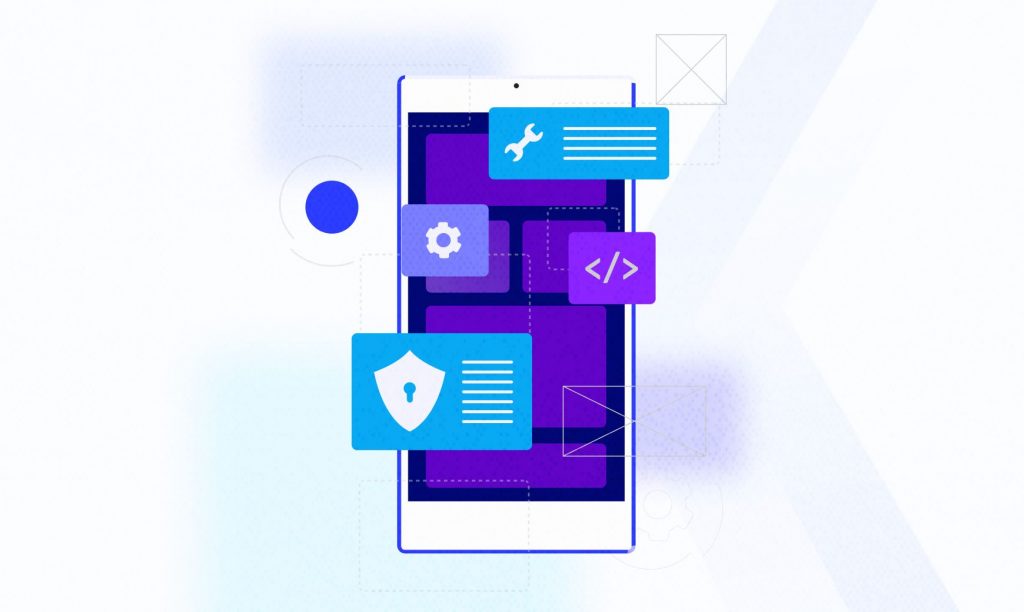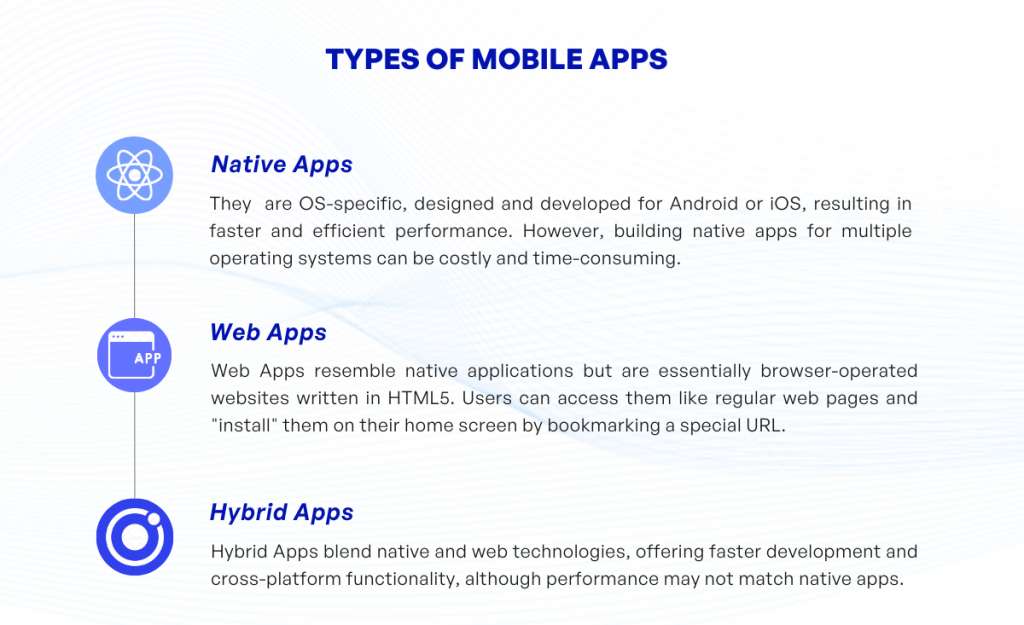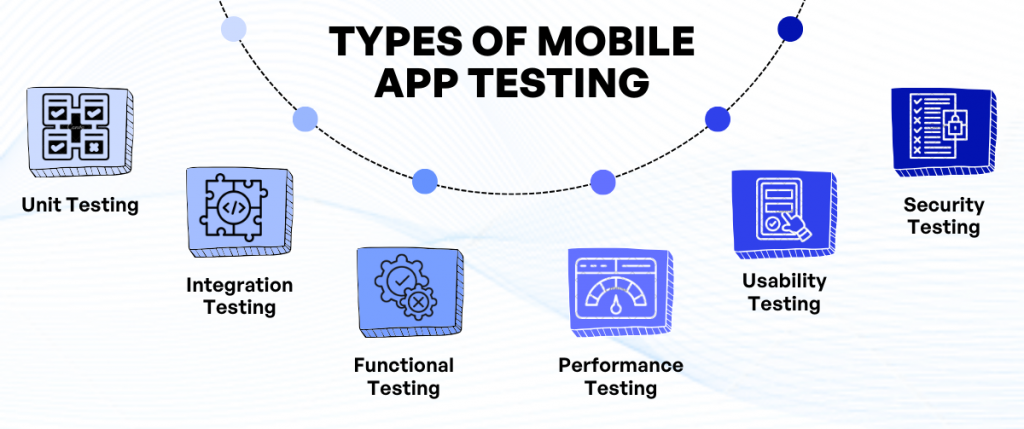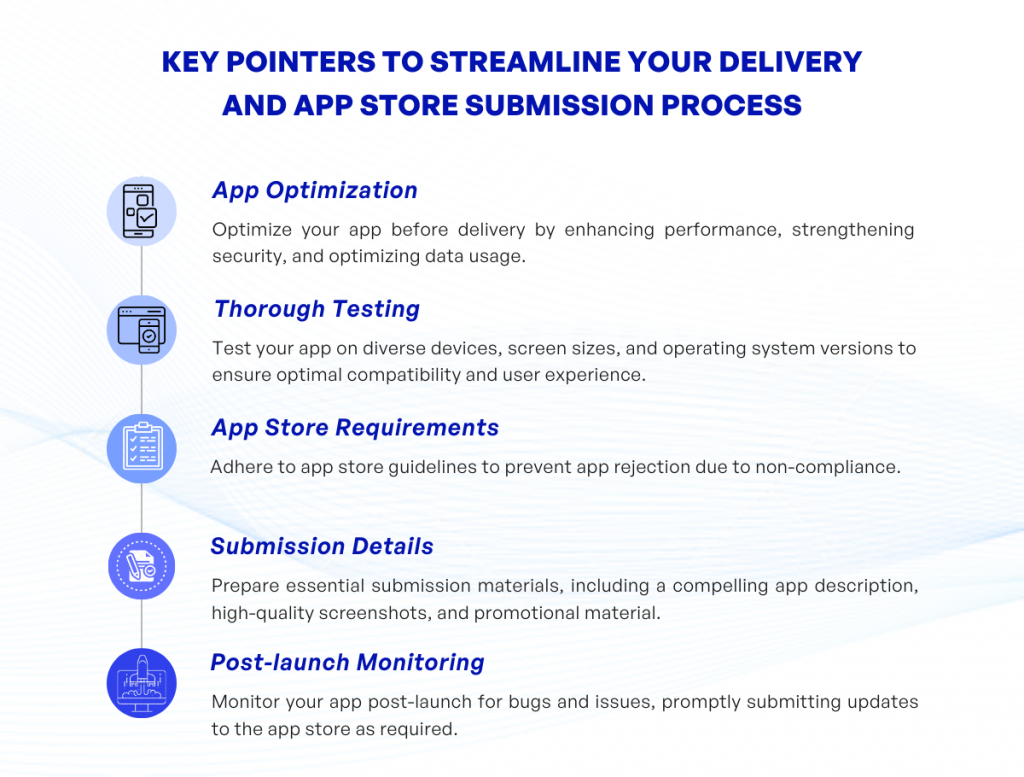
Did you know that, according to Statista, as of the third quarter of 2021, there are over 3.14 million apps in the Google Play Store and 2.09 million apps in the Apple App Store? That’s a mind-blowing quantity of mobile applications developed globally, each playing their diverse roles in bridging technology gaps across numerous sectors. If you’re looking to understand the vast scope of mobile app development, you’re in the right place.
As the numbers suggest, mobile app development isn’t just another tech trend—it’s a dominant and dynamic force that shapes the way we interact with the world. With each new app developed, there’s a chance to revolutionize industries, innovate services, or simply make daily tasks more manageable for users.
In this article, we’ll delve into the key areas that constitute the breadth of mobile app development. This would range from its influence on global industries, the latest trends shaping its progress, and how it’s increasingly becoming indispensable in our everyday lives. So, whether you’re an entrepreneur considering an app for your business or a developer aiming to expand your creative horizons, buckle u – there’s a lot in store.
1. Introduction to the Scope of Mobile App Development
Exploring the world of mobile app development can feel like a thrilling adventure; it’s full of curiosity, innovation, and endless possibilities. However, it’s much broader in scope than one may initially realize. It’s not only about coding or designing a visually appealing interface; rather, it includes a multitude of stages, each comprising unique tasks and responsibilities.
Mobile app development is a term used to denote the process by which application software is developed for mobile devices. These applications can be pre-installed on phones during manufacturing, or delivered as web applications using server-side or client-side processing. The process involves creating installable software bundles (code, binaries, assets, etc.), implementing backend services
such as data access with an API, and testing the application on target devices.
Why is mobile app development important, you may ask? Well, nowadays mobile apps have turned into a pivotal part of our everyday life. They assist us in all walks of life, from chatting with friends, and arranging our schedules, to running business operations. Hence, Recognizing and understanding the importance of the mobile app development process can significantly contribute to your strategic decisions, whether you’re an aspiring developer, a project manager, or an entrepreneur aiming to dive into the mobile market.
In the upcoming sections, we will delve into various facets of mobile app development, such as types of mobile apps, development platforms, programming languages, tools and environments, quality assurance, and app store submission processes. We aim to give you a comprehensive overview that can provide you with a solid base for understanding or engaging in this realm.
2. Types of Mobile Apps

Mobile apps are becoming an essential component of the digital strategy adopted by many businesses. Understanding the different types of mobile apps is key to choosing the right one for your business or project. In general, mobile apps can be divided into three categories: native apps, hybrid apps, and web apps.
Native Apps are designed and developed for a specific mobile operating system, like Android or iOS. These apps are typically faster and more efficient because they are built with the specific operating system in mind, taking advantage of its unique features and functionality. However, developing a native app for each operating system can be costly and time-consuming.
Web Apps are not real applications; they are websites that look and feel like native applications. They are run by a browser and typically written in HTML5. Users first access them as they would access any web page: they navigate to a special URL and then have the option of “installing” them on their home screen by creating a bookmark to that page.
Hybrid Apps, on the other hand, are a blend of native and web apps. They are created using standard web technologies such as HTML, CSS, and JavaScript, encapsulated within a native application. While hybrid apps can’t deliver the same level of performance as native apps, they can be developed faster and can function across multiple operating systems.
Each type of app has its pros and cons, and the decision about which to use depends on a variety of factors including your target audience, budget, and project timeline. Your decision should also consider the ease of maintenance and the need for frequent updates. A thorough analysis of your requirements and market trends can assist you in making the best choice for your specific project.
3. Development Platforms
When you’re embarking on the journey of mobile app development, choosing the right platform is crucial. These platforms provide the environment where you can write, design, and develop your app. Each platform has a unique set of features, tools, and capabilities that can impact your app’s performance and functionality. So, let’s take a closer look at some of the prominent mobile app development platforms.
3.1. Native Platforms
You’ve probably heard the terms iOS and Android. These are native platforms, commonly linked to mobile app development. Both offer Software Development Kits (SDKs) and extensive documentation to create native apps.
- iOS: Apple’s iOS system supports app development for devices such as iPhones, iPads, and iPods. Often, apps for this platform are developed using Objective-C or Swift in the Xcode IDE.
- Android: Google’s Android is an open-source mobile operating system. Developers commonly use Java or Kotlin working within the Android Studio IDE to build apps for Android devices.
3.2. Cross-Platform
For those who want to cater to a bigger audience group, spanning across different device types, considering cross-platform development might be a good idea. Here you can code once, and deploy your app on multiple platforms.
- React Native: A JavaScript framework that renders mobile applications for iOS and Android. It’s known for its code-sharing potential between these two platforms, allowing quicker multi-platform launch.
- Flutter: Google’s UI toolkit for building beautiful, natively compiled applications for mobile, web, and desktop from a single codebase. Flutter also supports rapid development and expressive UIs.
3.3. Web-Based Platforms
Web-based platforms allow you to create mobile web applications. These are particularly useful for developers focussed on delivering content and web services that need to be compatible across various devices.
- PhoneGap (Apache Cordova): An open-source mobile development framework that allows you to design and develop apps using HTML, CSS, and JavaScript, and reuse them across multiple operating systems.
- Meteor: A full-stack JavaScript platform for building web and mobile applications. It’s particularly known for its real-time updates and turning simple JavaScript into a complete, running application.
3.4. Progressive Web Apps (PWA)
Progressive Web Apps, or PWAs, offer an exciting territory in the scope of mobile app development. These are web applications that function much like native applications – but with a twist. PWAs can operate offline and provide almost identical features to a downloaded app, but they don’t require downloading from an app store. This makes them a compelling choice for those looking to bridge the gap between web and mobile.
Developing a PWA involves creating a responsive, application-like version of a website that can work on any platform or device that supports a standard-compliant browser. Because they’re compatible with any platform, PWAs help eliminate some of the issues associated with native app development, such as developing separate versions of an app for iOS and Android.
Just like native apps, PWAs can also leverage features like push notifications, access to device hardware, and other app-like functionalities – making them a potent tool in the world of mobile app development. However, note that not all features of a native application may be available for a PWA due to limitations in web technologies.
Keep in mind your choice of platform will depend on several factors including the technical skills of your team, the nature of your app, your budget, and your target audience’s preferred devices. Always take the time to research and weigh up the pros and cons before making the final decision.
4. Programming Languages
When you’re ready to plunge into the technical side of mobile app development, one of the first decisions you’ll encounter is the choice of the programming language. So let’s break it down for you, and introduce you to some of the most commonly used languages in the field.
Java has long been the official language for Android development. While it may be a bit complex for beginners, its versatility and wide use make it an essential language for any app developer.
On the other side, if you’re aiming for iOS development, Swift is the talk of the town. This language was explicitly designed by Apple for iOS and Mac apps. It’s extremely effective and easy to learn, proving that sometimes, the young ones really do know best!
When it comes to cross-platform development, JavaScript has proved its worth. It is the core language for most web and hybrid mobile application frameworks. With JavaScript, you can make your app available everywhere, while working from a single code base.
Kotlin, another rising star in the mobile app development realm, is particularly praised for its conciseness and coding efficiency. It is fully interoperable with Java and is even officially recommended by Google for Android app development. So, if Java feels intimidating, Kotlin might be your way to go.
HTML5 and CSS3, although technically not programming languages, also deserve a mention. Together, they form the cornerstone of web-based applications, making your apps look good and responsive on any device. If you’re considering going the web app route, these languages should definitely be in your toolkit.
The right language for you depends on your intended platform, your coding skills, and even your personal preferences. Remember, the perfect programming language doesn’t exist. It’s about finding the one that fits your needs, and that leads us to the next point: the tools and environments you’ll be using. Stay tuned to learn more about this topic!
5. Development Tools and Environments
When it comes to developing mobile apps, having the right set of tools and environments is crucial. The development tool you choose can greatly shape the development process and the final output. Without the right tools, you may end up with code errors, inefficiency, and low-quality applications.
Integrated Development Environments (IDEs) are a common companion for any mobile app developers. As the name suggests, IDEs combine multiple tools to allow you to write, test, and debug code. They often include a text editor, a compiler, and a debugger, all within a single interface. Android Studio and Xcode are notable examples of IDEs.
Code Editors are another important tool, offering a simplistic environment where you can write and edit your code. Code editors such as Sublime Text or Atom offer features like syntax highlighting, code completion, and snippets, which can significantly speed up your coding process and improve code accuracy.
Version Control Systems (VCS) like Git, can be a lifesaver for developers. Being able to track changes and revert to previous versions of a project can save many hours of work when something goes wrong. It’s also essential for collaborative projects, ensuring all members can see changes and updates in real time.
Mobile UI design tools are crucial for creating an intuitive and attractive user interface. Sketch, Adobe XD, and Figma are popular examples offering a variety of wire-framing and design capabilities.
Prototyping Tools, such as InVision or Marvel, allow you to create interactive mockups of your app. With these tools, you can simulate the app’s functionality and catch potential issues in the user experience before the development begins.
It’s important to note, that the selection of tools and environments will depend on the type of app you’re creating; its functionality, the platform it’s being developed for, and the programming language you’re using. However, no matter what the specifics of your project are, these are some of the key tools that can greatly facilitate the mobile app development process.
6. Testing and Quality Assurance

As the evolution of your app progresses from conceptualization and development onward, you step into a crucial stage known as testing and quality assurance. Here, the integrity of your app is on the line, and it’s vital to ensure seamless functionality and user-friendliness. In essence, this phase guides you to answer the all-important question: Is your app ready for the public?
There are several types of tests that your app must pass, each serving its unique purpose. Let’s get to know them better:
- Unit Testing: This is generally the first test carried out. It involves examining individual components of your app to ensure that each performs its intended function correctly.
- Integration Testing: After the unit testing, you’ll need to see how these individual units perform when they work together. This test is crucial to understand how efficiently your app’s components interact.
- Functional Testing: At this point, you’ll be verifying if your app is functioning as intended from a user’s perspective.
- Performance Testing: This test is designed to examine the load an app can handle, the speed of its operations, and its overall performance quality.
- Usability Testing: Here lies the factor that could make or break your app’s success: user experience. This test uncovers how user-friendly and intuitive your app is.
- Security Testing: Last, but far from least, is ensuring that user data and app resources are secure.
It’s crucial not to overlook any of these stages, as they collectively contribute to a reliable and high-quality mobile app.
Quality Assurance
Quality assurance (QA) measures the quality of processes used to create the product, thereby ensuring high-quality results. While testing is about identifying problems, QA is about preventing them. Here are some critical QA aspects to hold in mind:
- Establishing a clear and detailed set of requirements for your app.
- Creating a comprehensive testing plan.
- Performing all types of necessary testing.
- Make sure that your app meets the standards set by the app stores.
- Investing time in regular updates and maintenance after the release.
Remember, testing and quality assurance might be time-consuming and require considerable attention to detail, but they’re instrumental in securing the success of your app. These processes ensure that the end user receives a product that not only works as it should but also provides a satisfying user experience. So, test thoroughly, assure quality, and aim high!
7. Delivery and App Store Submission

Once you’ve hit the completion stage of your mobile app development journey, you might think you’ve crossed the finish line, but an essential phase still remains: Delivery and App Store Submission. It’s time to make your application accessible to users. Knowing how to effectively navigate this final stretch is key to making your app available to the world.
Delivery refers to the process of packaging and preparing your app for distribution. This typically includes generating a final build of your application, testing it thoroughly, and preparing it for submission, whether to an app store, directly to users, or both. It’s crucial to make sure the final version of your app is free of bugs and offers a smooth user experience.
App Store Submission, on the other hand, involves submitting your app to various app stores, such as the Apple App Store for iOS apps and Google Play for Android apps. This process often incurs a strict review policy to ensure that all submitted apps meet the store’s quality and safety standards. It’s vital to familiarize yourself with the specific requirements and guidelines of each app store to minimize chances
of rejection.
Follow these key pointers to streamline your delivery and app store submission process:
- App Optimization: Before delivering, ensure your app is fully optimized – this includes performance enhancements, security hardening, and data usage optimization.
- Thorough Testing: Undertake testing on multiple devices with various screen sizes and different operating system versions to ensure optimal compatibility and user experience.
- App Store Requirements: Each app store has a unique set of rules and regulations. Make sure you adhere to these guidelines to avoid getting your app rejected.
- Submission Details: Prepare all necessary materials needed for submission, like a compelling app description, high-quality screenshots, and promotional material.
- Post-launch Monitoring: Continuously monitor your app for any bugs or issues after launch, and be ready to submit updates to the app store as needed.
Delivery and app store submission might seem daunting, but with a strategic approach, this process can be seamlessly managed, placing your mobile app in the hands of users around the world. Congratulations, you’re on the cusp of going live!
8. Conclusion
To wrap things up, the scope of mobile app development is a vast, ever-changing, and thriving field. You’ve now seen how different mobile apps, platforms, and programming languages cater to unique requirements. It’s a challenging but rewarding realm, filled with unmatched potential for developers and businesses alike.
Next, we explored the array of tools and environments that can make the development process more efficient. And let’s not forget the crucial role of testing and quality assurance – it’s non-negotiable to ensure your app is free from glitches and resonates with your users. After all, a poorly performing app can cost you users and receive negative feedback.
Once your app has been tested and refined, the final step is to launch it on an app store. It’s a tricky process, navigating through various rules and protocols, but the satisfaction of having your app accessible to millions can’t be beaten.
Mobile app development is a dynamic landscape, constantly introducing new trends and technologies. Staying in the loop with these updates can be challenging, but it’s worth it. With the right tools and knowledge, you could produce an app that makes a real impact. There’s never been a better time to dive into mobile app development.
Whether you are a seasoned developer, a brand aiming to reach your audience in new ways, or a newbie starting your coding journey, grasping the extensive scope of mobile app development is the key initial step. Remember, the road to app development is a marathon, not a sprint. Brace yourself for continuous learning, evolution, and having fun along the way!
If you have any questions about Vast Universe of Mobile App Development, feel free to contact KVY TECH.


